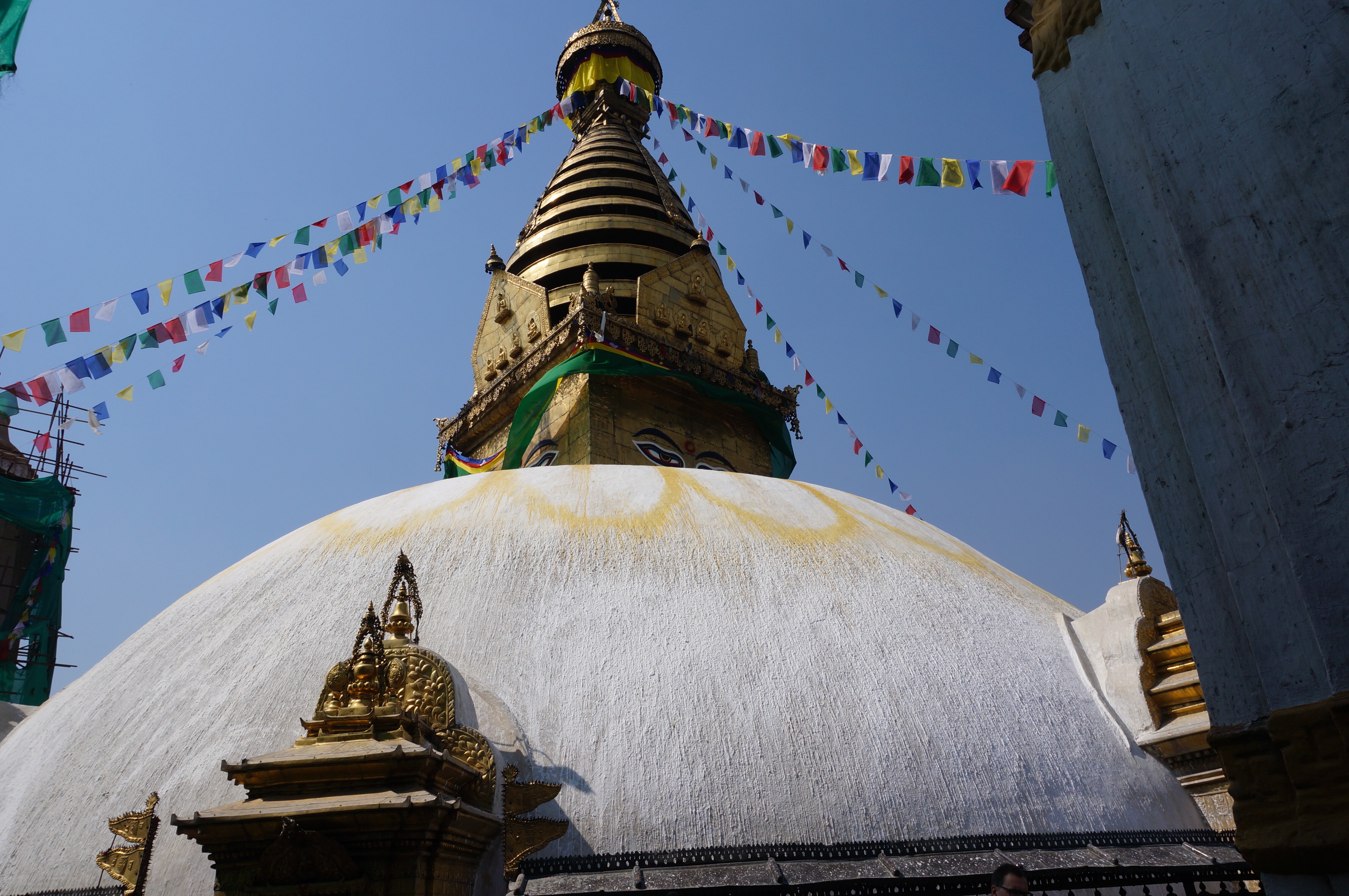Day 1 started with a trip to the hotel’s restaurant for breakfast, a surprising mix of baked beans, cauliflower, fried potatoes with onions and peppers, porridge and pancakes with syrup.
Afterwards we met the other members of our trekking group, Ali, Tash and Ben, in reception before meeting our guide, who walked us over to the office of the tour company to explain what was going to happen and make sure we had everything in order (altitude medication, sleeping bags, water purification tablets, etc). Afterwards we met another guide (mountain guides aren’t licensed to lead groups around the city, and vice versa) who took us for a days tour of the Kathmandu valley.
- The tops of the Stupas are made from real gold
- Monkeys roam freely about the temple
- Prayer wheels can be found in abundance.
- Next to the Stupa there are many roof top cafes.
- The view of Kathmandu is obscured somewhat by the pollution that hangs over the city.
- A man sells his wares at the temple
- Monkeys climb all over the temples
- The tops of the Stupas are gilded with real gold
- The huge bell at Monkey Temple can be heard for miles. Inscribed upon it are thousands of prayers.
After another chaotic journey we arrived at the temple, commonly known as Monkey Temple. As expected, there are a lot of monkeys. Many parts of the shrine have been demolished by the recent earthquake in Kathmandu. The locals are festidiously rebuilding the damaged sections, reusing the original materials. The bricks are not held together with mortar, but with clay and sand, which must be festidiously cleaned from the bricks before they can be reused. It is clear, from the standard of the work that is already complete, that the workmen are treating this as a labour of love, and are deeply respectful of the work they are doing.
Our second stop was another shrine, on the banks of the river. This is a Hindu shrine, dedicated to Shiva and is where people come to be cremated. The Buddhists believe that the body is made of 5 elements (which co-incidentally match up with the 5 different colours of the prayer flags you see everywhere in Nepal). These elements are Earth, wind, water, fire and sky. When a body is cremated, it is purified in fire, the spirit leaves into the sky (wind), when the fire has burned out, the ashes are swept into the river (water), where they finally return to the earth. Watching the people treating their loved ones before the cremation was very humbling. It’s hard not to feel a huge respect for the Nepalese people, who treat everything with huge respect and humility. On leaving this area, we passed an old people’s home. Many people, who have no family to care for them in old age come here, knowing that they will be properly cremated when their lives finally draw to a close. All of this is totally free of charge to them.
- The smoke of the cremation fire can be seen rising over the temples.
- The ashes of the dead bodies are swept into the river for their final reunification with the water element.
- The river is filthy with the ashes of people.
- The family of a dead relative prepare the body for the cremation
- The family of a dead relative prepare the body for the cremation
- The temple here is idolising the male phallus
- The family and friends carry a loved one to their final resting place.
Our final visit was to a third shrine. The roof of this shrine is made from solid gold and was noticeably larger than the first temple we saw. In this area are some of the largest prayer wheels that I could imagine. One has to walk around them to spin them around.
- The tops of the Stupas are gilded with real gold!
On our return to the hotel, we made a journey into the local shopping area to buy gifts and try to obtain some last minute items for our trip. Our evening meal concluded the day. We had some of the nicest food I’ve ever eaten in any restaurant, with beer, for around £10 per head.





















Comments are closed